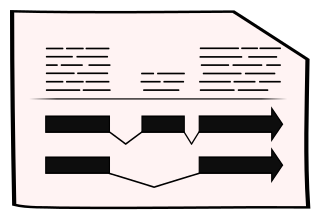Fasciola hepatica
BioProject PRJNA179522 | Data Source The Genome Institute | Taxonomy ID 6192
About Fasciola hepatica
The trematode Fasciola hepatica, or sheep liver fluke or common liver fluke, is a parasite that infects humans, cows and sheep. It causes a disease called fascioliasis, infection arises from ingestion of metacercariae on water plants such as watercress. In the UK, Fasciola is generally common in farmed livestock which graze upon wetland pastures where the parasites intermediate snail host thrives.
There is 1 alternative genome project for Fasciola hepatica available in WormBase ParaSite: PRJEB25283
Genome Assembly & Annotation
Assembly
The genome assembly was produced by the Mitreva laboratory of the Division of Infectious Diseases at theWashington University School of Medicine in St. Louis. The first version of this assembly submitted in late 2013 as part of the 50 Helminth Genomes project. The version presented here is an improved version of the assembly (GCA_002763495.2) submitted in 2019. The assembly uses Illumina HiSeq2000 paired-end sequencing. ALLPATHS-LG was used to assemble the Illumina reads. Pygap, an in-house assembly improvement tool, was used to join and extend contigs using unassembled reads when possible.
Annotation
The gene predictions were made by the Mitreva laboratory of the Division of Infectious Diseases at theWashington University School of Medicine in St. Louis. Protein coding genes were predicted from the masked assembly using a combination of Snap, Fgenesh, Augustus, and the MAKER annotation pipeline using evidence from assembled transcripts, ESTs (GenBank EST database), and protein sequences from F. hepatica and related organisms.
Downloads
Tools
Key Publications
- McNulty SN, Tort JF, Rinaldi G, Fischer K, Rosa BA, Smircich P, Fontenla S, Choi YJ, Tyagi R, Hallsworth-Pepin K, Mann VH, Kammili L, Latham PS, Dell'Oca N, Dominguez F, Carmona C, Fischer PU, Brindley PJ, Mitreva M. Genomes of Fasciola hepatica from the Americas Reveal Colonization with Neorickettsia Endobacteria Related to the Agents of Potomac Horse and Human Sennetsu Fevers. PLoS Genet, 2017;13(1):e1006537
- International Helminth Genomes Consortium. Comparative genomics of the major parasitic worms. Nat Genet, 2019;51(1):163-174
Navigation
Assembly Statistics
| Assembly | F_hepatica_1.0.allpaths.pg, GCA_002763495.2 |
| Database Version | WBPS18 |
| Genome Size | 1,138,329,001 |
| Data Source | The Genome Institute |
| Annotation Version | 2021-12-WormBase |
Gene counts
| Coding genes | 11,217 |
| Non coding genes | 1,208 |
| Small non coding genes | 1,208 |
| Gene transcripts | 12,425 |
Learn more about this widget in our help section
This widget has been derived from the assembly-stats code developed by the Lepbase project at the University of Edinburgh











